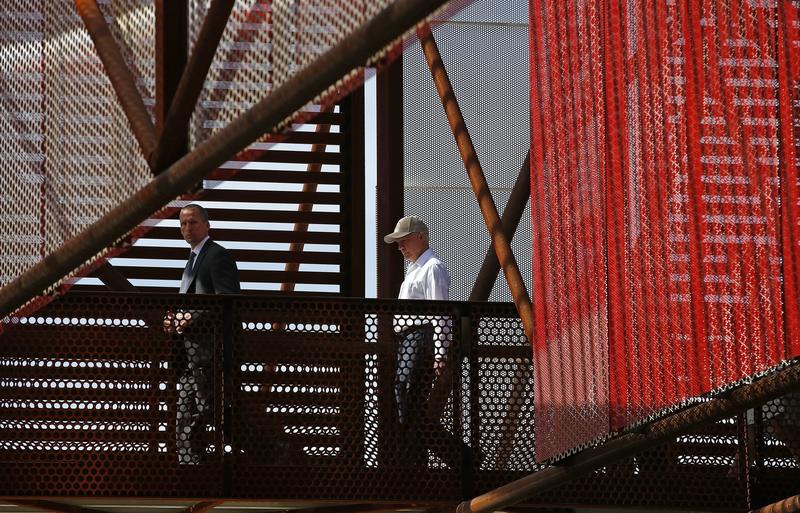
There are 29 immigration judges assigned to court rooms in the Federal Building in Lower Manhattan. But as the number of pending cases grew from about 70,000 in January to nearly 80,000 this spring, more and more people have been coming to court only to discover they don’t have judges.
On a Tuesday morning in May, Alin Guifarro expected to attend a hearing with his 18-year-old son, Jose David Rodriguez. The teen came from Honduras last year to join his father and is trying to get legal status in the U.S.
But when they went to the 12th floor and scanned the long list of names with appearances scheduled that day, Guifarro saw his son’s case wasn’t assigned to a judge. Confused, he went to the clerk’s office and was told he would eventually get a letter in the mail about a new court date.
Guifarro was frustrated. “I came over here driving 2 ½ hours for nothing,” he said, referring to his journey from his home in Mastic, Long Island.
This father and son aren’t the only ones whose immigration cases have been postponed lately.
“In the last two months this has happened every week,” said Bryan Johnson, an immigration lawyer based on Long Island. Many of his clients are seeking asylum, and he said some have already been waiting a couple of years. With extra delays, he said, “if they have children who are abroad, that will delay family unification or spousal unification if their spouse is abroad.”
On a single day in May, when almost 400 hearings were scheduled to take place in immigration court, WNYC counted 60 people who didn’t have judges.
The Executive Office for Immigration Review runs the nation’s immigration courts. It says staffers typically mail a notice if a judge is out or a case is delayed, but they don’t always go out in time. As for why people are coming to court without judges, the agency explained that they are technically assigned to ”visiting judges.” But it acknowledged these judges don’t actually exist.
"The concept of 'visiting judges' is for internal case management," said E.O.I.R. spokesman John Martin. "When judges retire, or temporarily stop hearing cases due to illness, the New York City Immigration Court will assign these dockets to a 'visiting judge' in order to maintain continuity of these cases. As new immigration judges are hired and officially placed at their respective immigration court locations, these 'visiting judge' dockets in those locations are reassigned to them."
Even after a recent hire, New York City has only 29 immigration judges, compared to 31 at this time last year.
The backlog in immigration courts isn’t new. There are almost 600,000 pending cases, nationally. The problem started well before President Donald Trump took office.
“This is sort of, I think, the Obama administration’s baby — it’s now grown up and grown fangs,” said Shouan Riahi, an attorney with Central American Legal Assistance in Brooklyn.
Riahi said a lot of his clients crossed the border during a surge in 2014 and became the priority in immigration courts, even though there weren’t enough judges.
“Expediting the deportation of the huge number of people without the capacity to actually do it was always going to end in disaster,” he said. “Because how can you possibly process these cases if there’s no one to hear them?”
These days, the average wait time in New York’s immigration court is more than two years, according to Transactional Records Access Clearinghouse at Syracuse University. President Trump has placed more pressure on the court system with his immigration policies. In April, Attorney General Jeff Sessions announced that all adults crossing the Mexican border would be sent to detention. To support the mission, he said, the Department of Justice had “already surged 25 immigration judges to detention centers along the border.”
But many of those judges are being pulled from busy courts like the one in New York. WNYC has determined that at least eight New York judges have been assigned to detention courts in Texas and Louisiana since March. That’s a lot more than in previous redeployments, said Dana Lee Marks, president of the National Association of Immigration Judges.
“There’s no historical precedent,” she stated. “And unfortunately this is the culmination of the fact that for more than a decade, resources to the immigration courts have been ignored. And that we were not given efficient money to hire the number of judges that the caseloads “justified.”
There are currently just over 300 immigration judges and the Trump administration plans to hire 50 more. But experts have said that’s still not enough.
